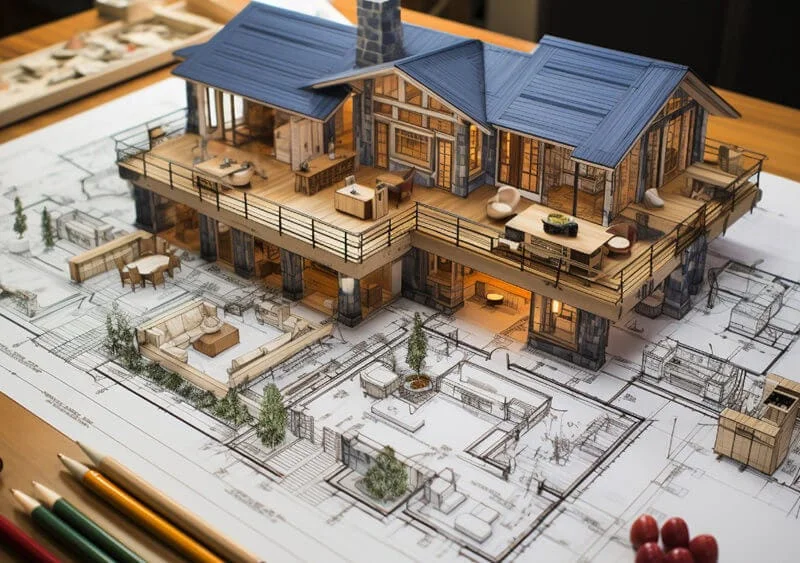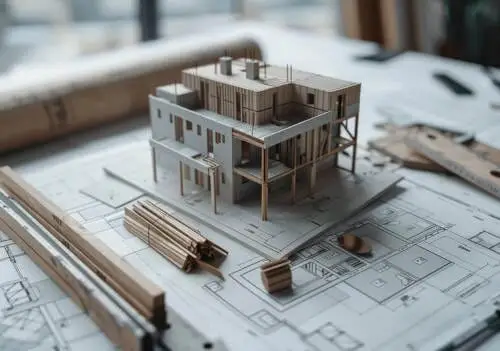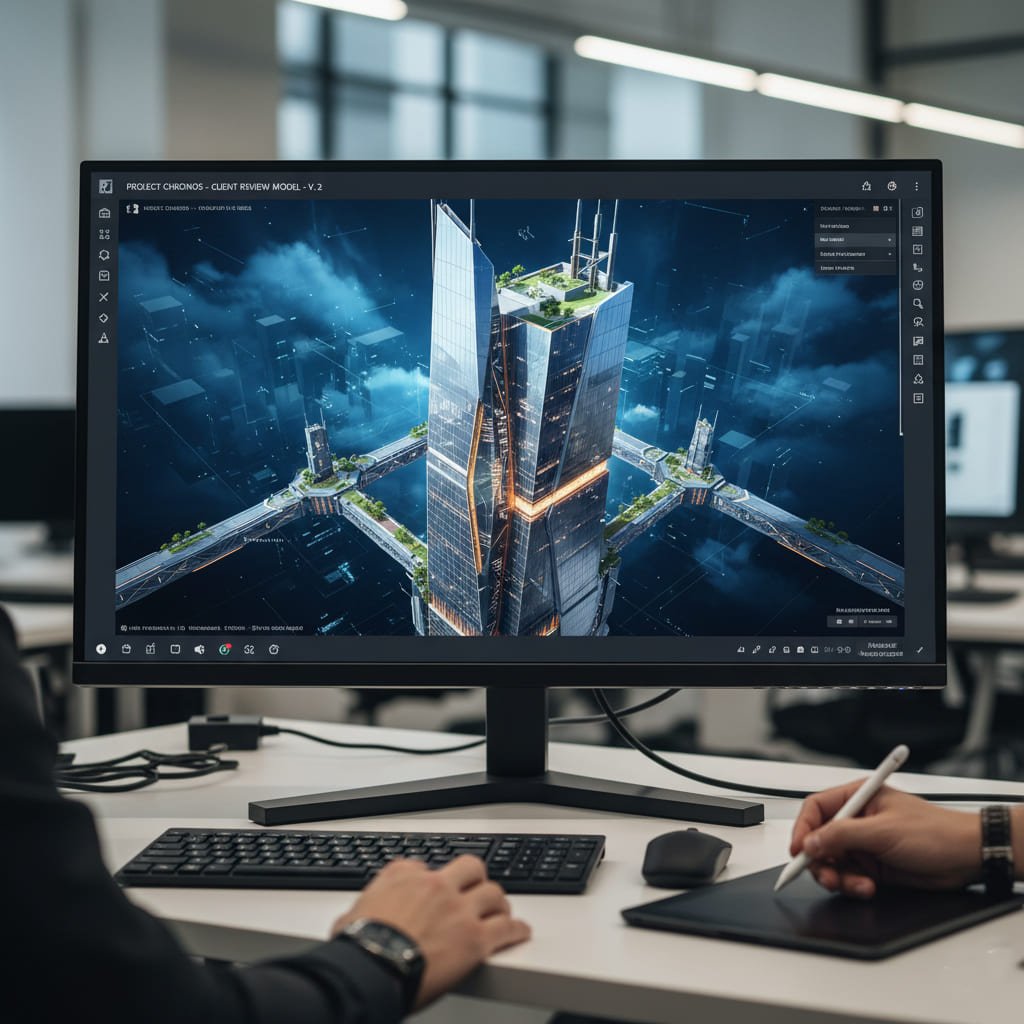Sur le marché visuellement par visuellement d'aujourd'hui, choisir comment représenter vos produits est l’une des décisions les plus critiques que vous prendrez. Pendant des décennies, traditional photography was the undisputed champion, but a powerful challenger has emerged: 3D rendering, or Computer-Generated Imagery (Image de synthèse). Donc, which is better? The answer isn’t a simple knockout. This isn’t about which is “mieux,” but which is the right strategic tool for the job. Photography excels at capturing authenticity and emotional connection, while 3D rendering offers unmatched flexibility, évolutivité, and long-term cost-effectiveness. The smartest choice depends entirely on your product, budget, industrie, and marketing goals. This definitive guide will walk you through a deep-dive comparison of their workflows, costs, and strategic advantages, giving you a clear framework to future-proof your brand’s visual content and make the best investment for your business.
Table des matières
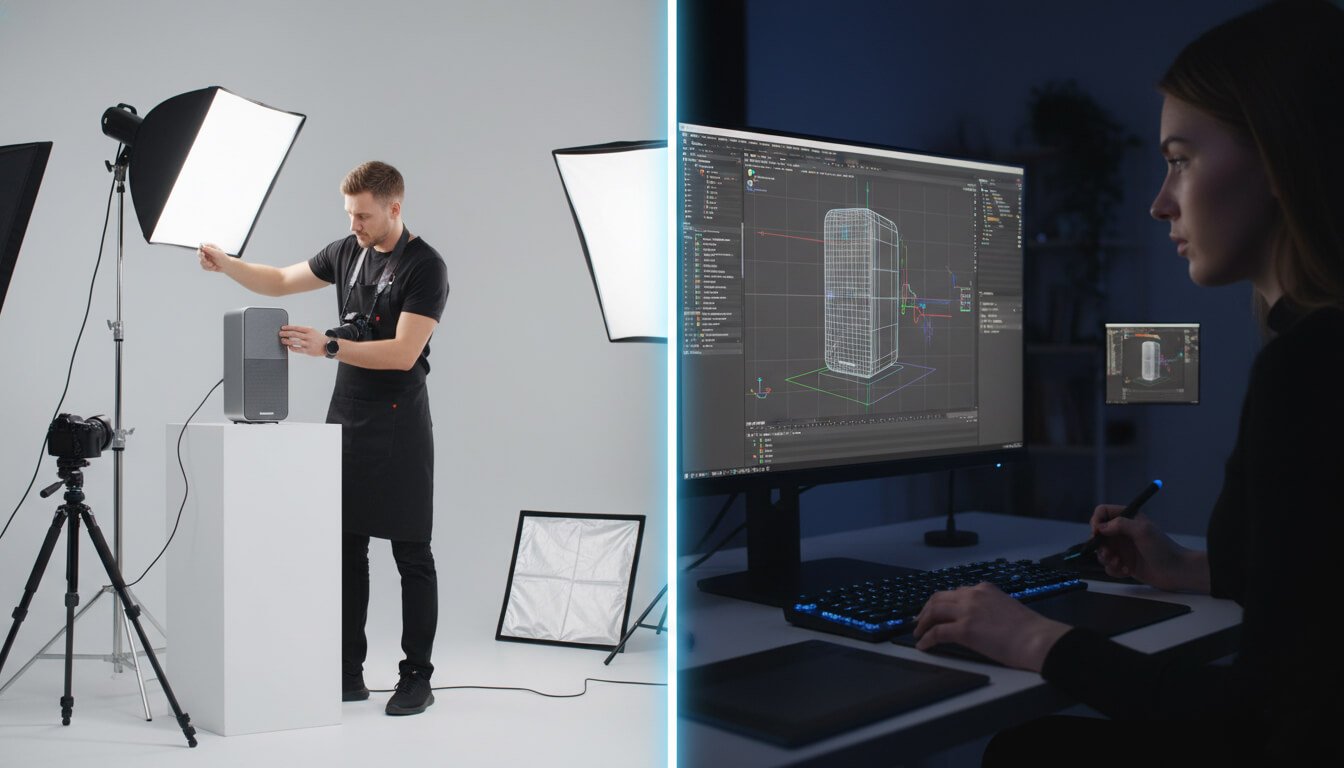
Les fondamentaux: What Is 3D Rendering vs. Commercial Photography?
Before we can compare them, it’s essential to understand exactly what each process entails. While both produce images, their methods and capabilities are worlds apart.
What is 3D Rendering (Image de synthèse)? The Art of the Virtual Photoshoot
3D rendering is the process of creating a photorealistic or stylized 2D image from a digital 3D model. Think of it as a photoshoot that happens entirely inside a computer. A 3D artist acts as the photographer, sculptor, and set designer all in one. They build a digital replica of a product, apply virtual materials to its surfaces, arrange digital lights to create the perfect mood, and then instruct the computer to “take a picture.”
This process is incredibly powerful because it isn’t bound by the laws of physics. You can create images of products that don’t physically exist yet, place them in impossible environments, and change every single detail with a few clicks. The final image can be so realistic that it’s virtually indistinguishable from a traditional photograph.
What is Commercial Photography? The Craft of Capturing Reality
Commercial photography is the well-established art of capturing high-quality images of physical products using a camera, éclairage, and real-world settings. It’s about capturing reality in its best light. A skilled photographer uses their expertise to style the product, arrange lighting to highlight its features, and compose a shot that is both informative and emotionally resonant.
The strength of photography lies in its authenticity. It captures the subtle imperfections, textures, and nuances of a real object, which can build immediate trust with a customer. When you need to show how a product feels to the touch or how it looks when used by a real person, photography has traditionally been the gold standard.
A Tale of Two Workflows: How Each Visual Is Actually Made
To truly understand the strategic differences, you need to look behind the curtain at the step-by-step process for creating an image with each method.
The Traditional Photography Workflow: From Prep to Post-Production
The photography process is linear and heavily dependent on physical logistics. Any mistake or change often means going back to square one.
- Pré-production: This is the planning phase. It involves developing the creative concept, hiring a photographer and stylists, scouting and booking a location or studio, sourcing props, and arranging for the physical product samples to be shipped to the shoot.
- Production (The Photoshoot): This is the day of the shoot. The team sets up the studio, meticulously arranges the lighting, styles the product, and the photographer captures the images. This stage is vulnerable to real-world problems like bad weather for an outdoor shoot, a damaged product sample, or a prop not arriving on time.
- Post-production: After the shoot, the best images are selected. A retoucher then edits them in software like Adobe Photoshop to correct colors, remove blemishes, and make final adjustments.
The 3D Rendering Workflow: From Model to Final Image
The 3D process is digital and front-loaded. The biggest investment of time and effort is in creating the initial 3D model, which then becomes an endlessly reusable asset.
- 3D Modélisation: This is the foundational step. A 3D artist creates a precise digital replica of the product using specialized software, based on CAD files, dessins techniques, or reference photos. This is a one-time investment.
- Texturing and Staging: The artist applies digital materials (like wood, métal, or fabric) to the model and builds a virtual scene around it. This digital set can be anything from a simple white background to a hyper-realistic living room or an abstract environment.
- Rendu: The artist sets up virtual cameras and lights. Alors, the computer performs the heavy lifting, calculating all the light, ombre, and material interactions to generate the final high-resolution image.
- Post-production: Just like with photography, the raw rendered image is often brought into Photoshop for final color grading and enhancements.
The key difference? In photography, if you want a new angle, you have to reshoot. En rendu 3d, you just move the virtual camera and render again.
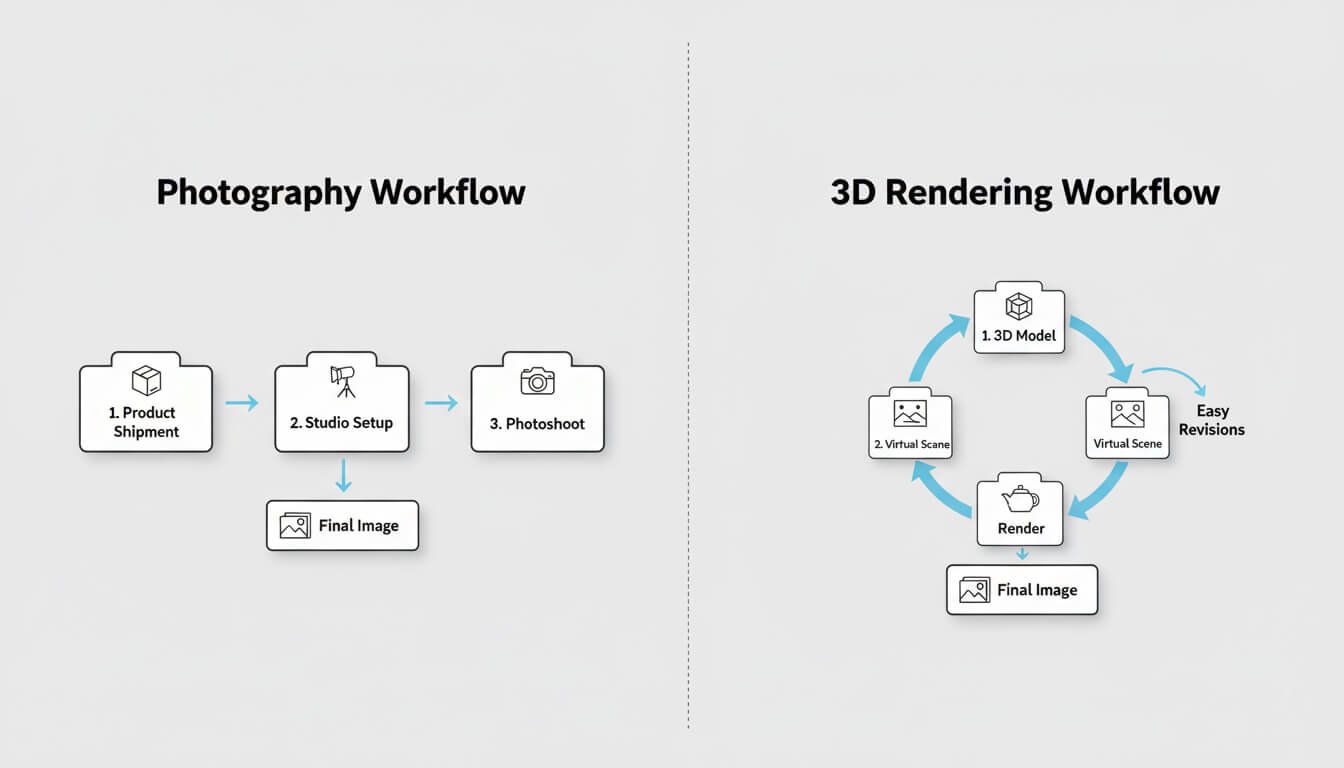
The Head-to-Head Comparison: 6 Factors That Will Determine Your Choice
Maintenant, let’s put these two visual giants in the ring together and compare them across the six factors that matter most to your business.
Tableau: 3D Rendu vs. Photography at a Glance
| Fonctionnalité | 3D Rendu (Image de synthèse) | Traditional Photography |
|---|---|---|
| Réalisme | Photorealistic, but can appear “too perfect.” Captures ideal form. | 100% authentique. Captures real-world imperfections and textures. |
| Cost Model | High upfront cost for the 3D model, then extremely low cost for variations. Exponential ROI. | Lower upfront cost for a single shot, but costs are linear and repeat for every new image. |
| Vitesse | Faster for variations, revisions, and pre-production marketing. | Can be faster for a single, simple shot of an existing product. |
| Flexibilité | Nearly infinite. Any angle, couleur, matériel, or environment is possible. | Limited by physical constraints (gravity, location, budget, météo). |
| Scalability | Extrêmement élevé. Ideal for large catalogs and customizable products. | Faible. Scaling requires repeating the entire costly photoshoot process. |
| Product Requirement | None. A physical product is not needed, only design files. | Essential. A perfect physical product sample must be present. |
1. Coût: The Battle of Upfront vs. Ongoing Expenses
Understanding the cost is not just about the price of a single image; it’s about the entire economic model of your visual content production.
- Photography’s Linear Cost: With photography, you pay for every single image. If you need a photo of a chair on a white background, you pay for a shoot. If you then need that same chair in a lifestyle scene, you pay for another shoot. If you release the chair in five new colors, you pay for five more shoots. The costs are predictable but they add up, and they never stop.
- 3D Rendering’s Exponential ROI: 3D rendering works on a completely different model. There’s a higher initial investment to create the high-quality 3D model of your product. Cependant, once that digital asset is built, the cost to create new images from it plummets. That same chair can be placed in a hundred different scenes, rendered from a thousand different angles, and shown in a million different colors, all for a fraction of the cost of a single new photoshoot.
2. Vitesse & Time-to-Market: Which Gets You to Market Faster?
In a fast-paced market, speed is a competitive advantage. While a quick photoshoot for a single product might be done in a day, the overall timeline for a full campaign is a different story.
3D rendering’s biggest speed advantage is its ability to **decouple marketing from manufacturing**. You can create a full library of stunning, photorealistic marketing images for a new product line based on the CAD files alone, months before the first physical prototype even exists. This allows you to launch ad campaigns, populate your e-commerce site, and even take pre-orders while your competitors are still waiting for their products to arrive at the photo studio.
3. Flexibilité & Creative Freedom: The Real vs. The Impossible
This is where 3D rendering truly leaves photography behind. Photography is bound by reality. You can’t photograph a cross-section of a running engine. You can’t easily photograph a sofa on the moon. You’re limited by budget, logistics, and the laws of physics.
With CGI, the only limit is your imagination. You can create:
- Cutaway and Exploded Views: Show the intricate inner workings of your product.
- Impossible Environments: Place your product anywhere, from a minimalist abstract space to a fantastical landscape.
- Perfect Control: Fine-tune every reflection, every shadow, and every detail to create the perfect, idealized representation of your product.
4. Scalability: The Secret Weapon for Large Product Catalogs
Scalability is the ability to efficiently produce a large volume of content. For businesses with extensive or customizable product lines, this is a non-negotiable requirement, and it’s where photography struggles the most.
Imagine you’re a furniture brand selling a sofa that comes in 20 different fabrics and 5 different leg finishes. That’s 100 variations. To photograph every single one would be a logistical and financial nightmare. Avec rendu 3D, once the base model of the sofa is created, generating high-quality images of all 100 variations is a simple, often automated, and incredibly cost-effective process. This makes rendering the only viable solution for powering online product configurators.
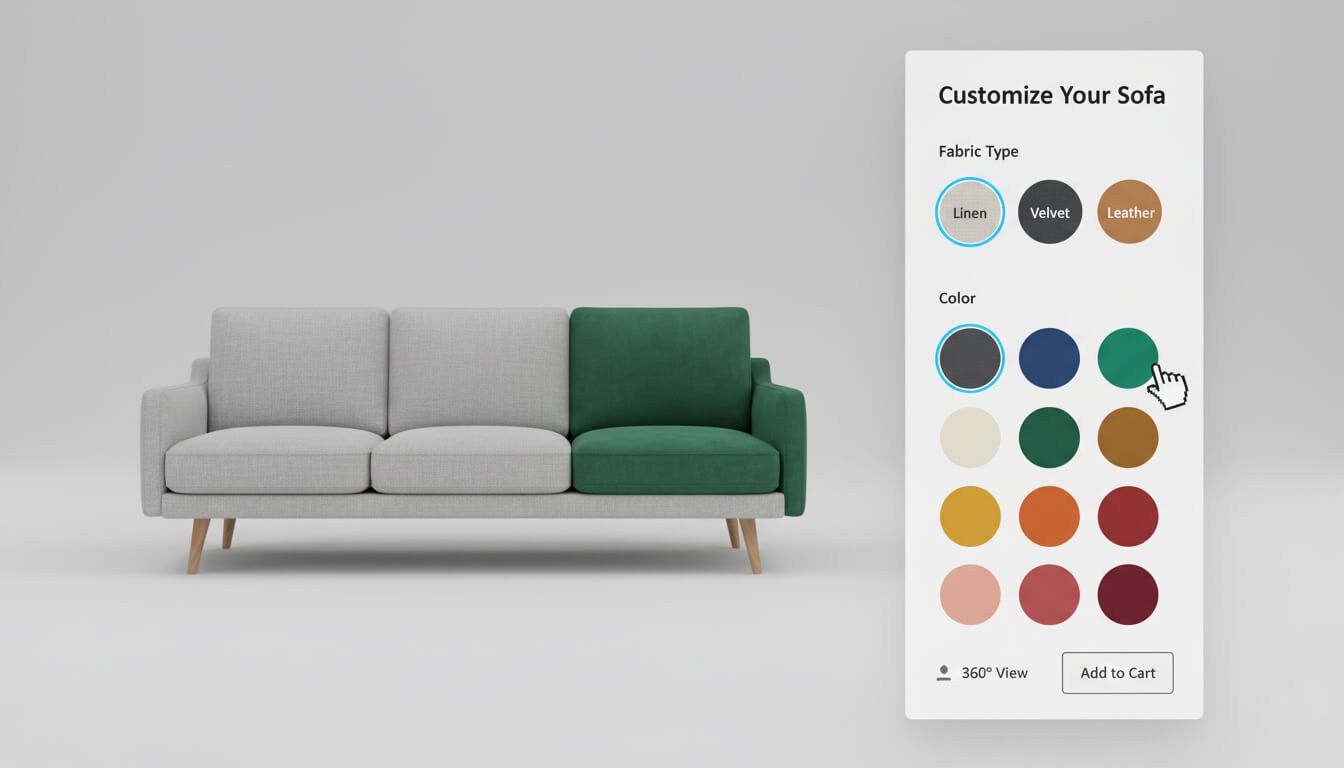
5. Qualité & Réalisme: The Uncanny Valley vs. True Authenticity
This is the one area where photography has traditionally held the edge. A photograph is, by definition, authentique. It captures the real-world texture of a fabric, the subtle imperfections of a handmade object, and the genuine emotion on a person’s face.
3D rendering, while capable of astonishing realism, can sometimes fall into the “uncanny valley.” This is where an image looks *almost* real, but something is subtly off, making it feel slightly artificial or sterile. This is particularly challenging for organic materials like food, fur, and human skin. Cependant, for hard-surface products like electronics, meubles, et architecture, modern high-end CGI created by skilled artists is often completely indistinguishable from a photo.
6. Reusability: Future-Proofing Your Visual Assets
When you invest in visual content, you should think of it as building a library of assets. A photograph is a static asset with a limited lifespan. It captures one product, in one setting, at one moment in time. If the product design changes or the branding evolves, the photo becomes obsolete.
A 3D model, cependant, is an evergreen, dynamic asset. It can be updated as your product evolves. It can be repurposed for new still images, animations, 360-degree spins, and even immersive augmented reality (RA) et réalité virtuelle (VR) expériences. It is a foundational investment that pays dividends for years to come.
Industry Deep Dive: Which Method Wins for Your Niche?
The strategic choice between rendering and photography often comes down to the specific demands of your industry.
For Architecture & Immobilier: The Pre- contre. Post-Construction Strategy
- Use 3D Rendering: This is the essential tool for the pre-construction phase. Use it to create stunning visuals for marketing unbuilt properties, securing investor funding, and getting client approvals on design concepts. 3D walkthroughs can sell 70% of a development off-plan.
- Use Photography: Once the project is built, professional architectural photography is perfect for capturing the authentic, finished space. It provides proof of the final quality and is ideal for portfolio use and award submissions.
For E-commerce & Meubles: The Power of Configurators and Scale
- 3D Rendering is King: For businesses with customizable products, rendering is a necessity. It’s the technology that powers the product configurators and 360-degree views that modern consumers expect. For large catalogs, it’s the only scalable solution. Case in point: IKEA’s AR app, powered by 3D models, allows customers to place virtual furniture in their own homes, dramatically boosting sales.
For Food & Fashion: The Quest for Authenticity and Emotion
- Photography Often Wins: These industries thrive on authenticity and human connection. The texture of a chunky knit sweater, the juicy sizzle of a burger, the way a dress flows on a real person—these are moments best captured by a camera.
- Where Rendering Fits: CGI is increasingly used for clean, white-background e-commerce shots (packshots) and for creating highly stylized, conceptual ad campaigns.
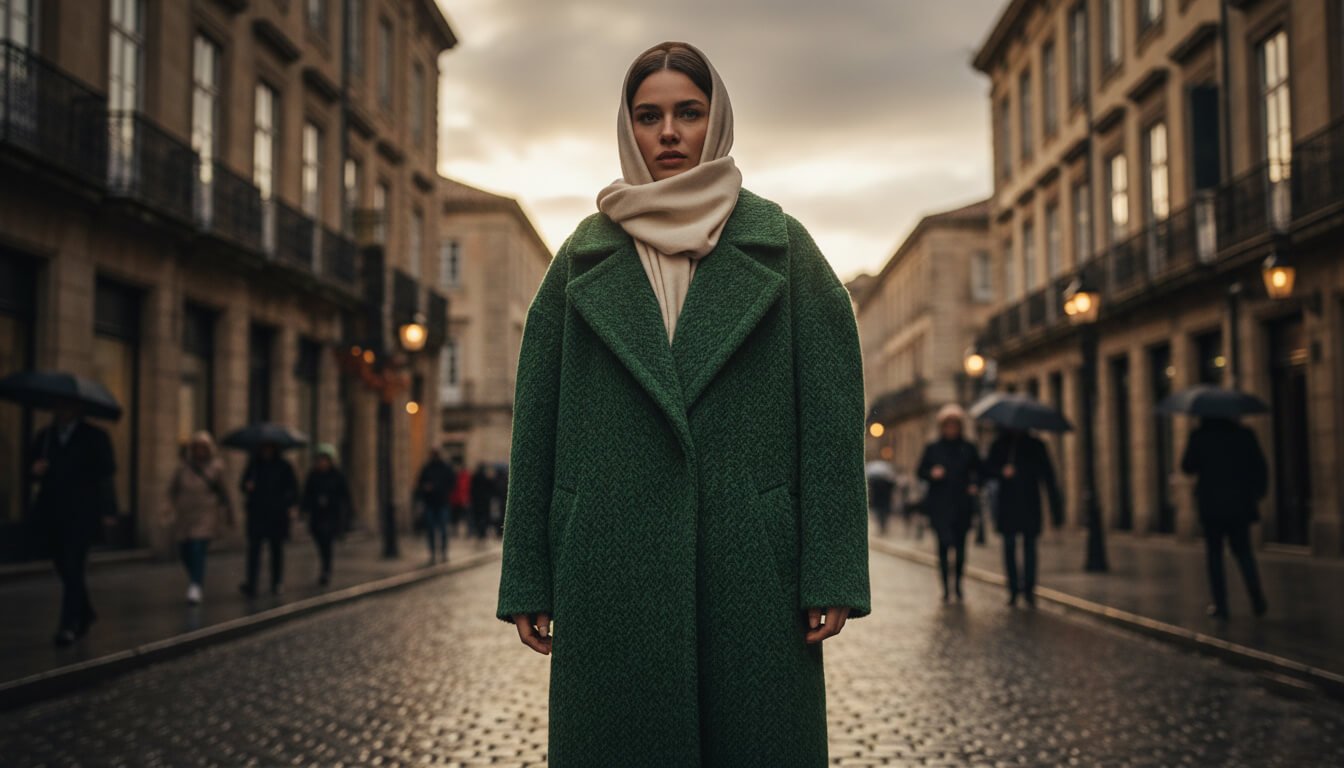
For Technology & Industrial Products: Showcasing the Unseen
- 3D Rendering is Superior: How do you photograph the inside of a smartphone? Or the airflow through a jet engine? 3D rendering is the perfect tool for creating clean, precise visuals of technical products. It excels at producing cutaway views, exploded diagrams, and instructional animations that clearly explain how a complex product works.
A Practical Guide: A Decision-Making Framework for Your Next Project
Still unsure? Ask yourself these questions to create a clear decision tree for any project.
Tableau: A Flowchart for Choosing Your Visual Strategy
| Ask Yourself This Question… | If YES… | If NO… |
|---|---|---|
| 1. Does the physical product exist yet? | Consider Photography | 3D Rendering is your only option. |
| 2. Do you need to show many variations (couleurs, matériels, sizes)? | 3D Rendering is far more efficient. | Photography could be viable. |
| 3. Do you need to show real people interacting with the product authentically? | Photography is likely the best choice. | 3D Rendering is a strong contender. |
| 4. Do you need to show impossible views (coupes, fantasy scenes)? | 3D Rendering is the clear winner. | Photography can work. |
| 5. Is capturing subtle, real-world imperfections the top priority for your brand’s trust? | Photography is ideal. | 3D Rendering can create a perfect, idealized look. |
| 6. Is this a one-off project with a very tight initial budget? | Photography may be cheaper upfront. | Consider the long-term ROI of a 3D asset. |
| 7. Are you building a long-term, reusable asset library for the future (animations, RA, etc.)? | 3D Rendering is the strategic investment. | Photography provides static, less reusable assets. |
Conclusion: Making the Strategic Choice for Your Brand
As we look to 2025 et au-delà, the debate is no longer about which technology is superior, but which is the right strategic tool for the job. 3D rendering has undeniably earned its place as a powerhouse for scalability, flexibilité, and speed to market. It is the engine of modern e-commerce and pre-production marketing.
Cependant, photography remains the undefeated champion of tangible realism and emotional authenticity. Its unique ability to capture a genuine moment and build a human connection is something that pixels can’t fully replicate. The most innovative and successful brands are no longer choosing one over the other; they’re embracing a hybrid strategy. They leverage the digital efficiency of rendering to build a comprehensive and scalable visual library, and then use the undeniable power of photography for high-impact, brand-defining storytelling. By combining both, you get a visual strategy that is both powerfully efficient and deeply compelling.
Which method has worked best for your business, and why? Share your experiences and questions in the comments below!
Questions fréquemment posées (FAQ)
Is 3D rendering cheaper than photography?
It depends on the scope. For a single, one-off image of an existing product, photography is often cheaper upfront. Cependant, for any project that involves multiple product variations, different angles, or the likelihood of future updates, 3D rendering is almost always more cost-effective in the long run due to the reusability of the 3D model.
Can you tell the difference between a high-quality render and a photo?
In many cases, Non. Modern high-end CGI, created by skilled artists, can be virtually indistinguishable from a professional photograph, especially for hard-surface products like furniture, électronique, et architecture. Cependant, for organic subjects like people and fresh food, a discerning eye can often spot the subtle perfection that gives away a render.
How long does it take to create a 3D render?
The initial 3D modeling is the most time-consuming part, taking anywhere from a few hours for a simple object to over 80 hours for a highly complex one. Once the model is built, generating a final high-resolution still image can range from a few minutes to several hours, depending on the scene’s complexity and the desired quality settings.
Do I need a physical product for 3D rendering?
Non, and that is one of its greatest advantages. 3D artists can create a photorealistic digital model using only design files (like CAD drawings), technical schematics, or a series of reference photos. This allows you to create a full suite of marketing materials months before the first product rolls off the assembly line.
What is CGI photography?
“CGI photography” is another term for 3D product rendering. It emphasizes that the goal of the process is to create a photorealistic image that serves the same purpose as a traditional photograph—to showcase a product in its best light—but is created entirely within a computer.
Is 3D rendering the future of product marketing?
For many industries, it already is. Its inherent scalability, creative flexibility, and ability to power interactive content like 360-degree spins and Augmented Reality (RA) experiences make it an essential tool for modern e-commerce. While photography will always have a vital role in storytelling and building authenticity, the strategic and financial advantages of 3D rendering are undeniable.
What industries benefit the most from 3D rendering?
Industries with customizable products, large catalogs, or products that are difficult to photograph see the biggest benefits. Cela comprend furniture and home decor, architecture and real estate, consumer electronics, automotive design, et industrial machinery. It’s also invaluable for any company that wants to market a product before it’s physically available.


